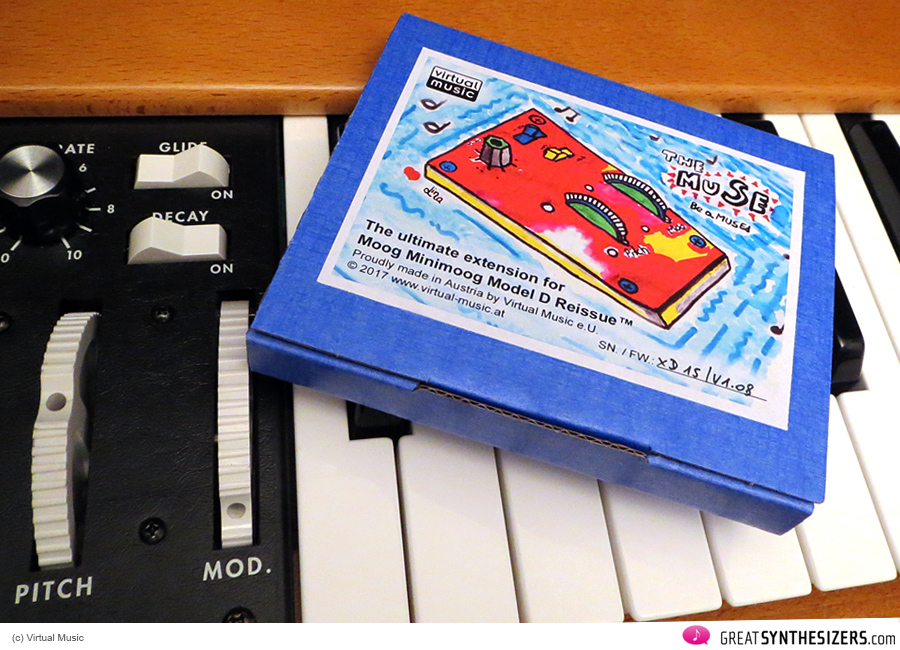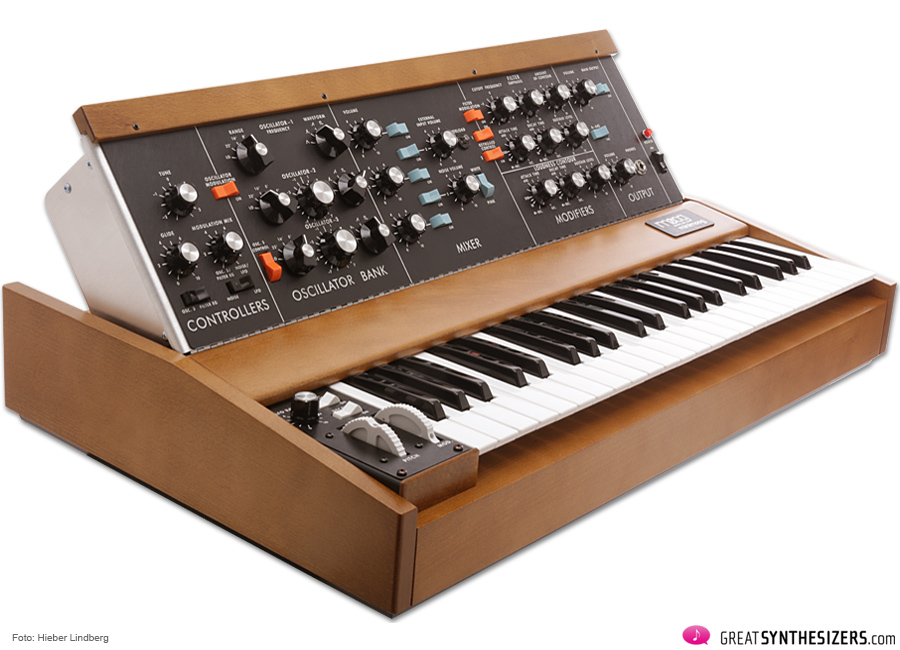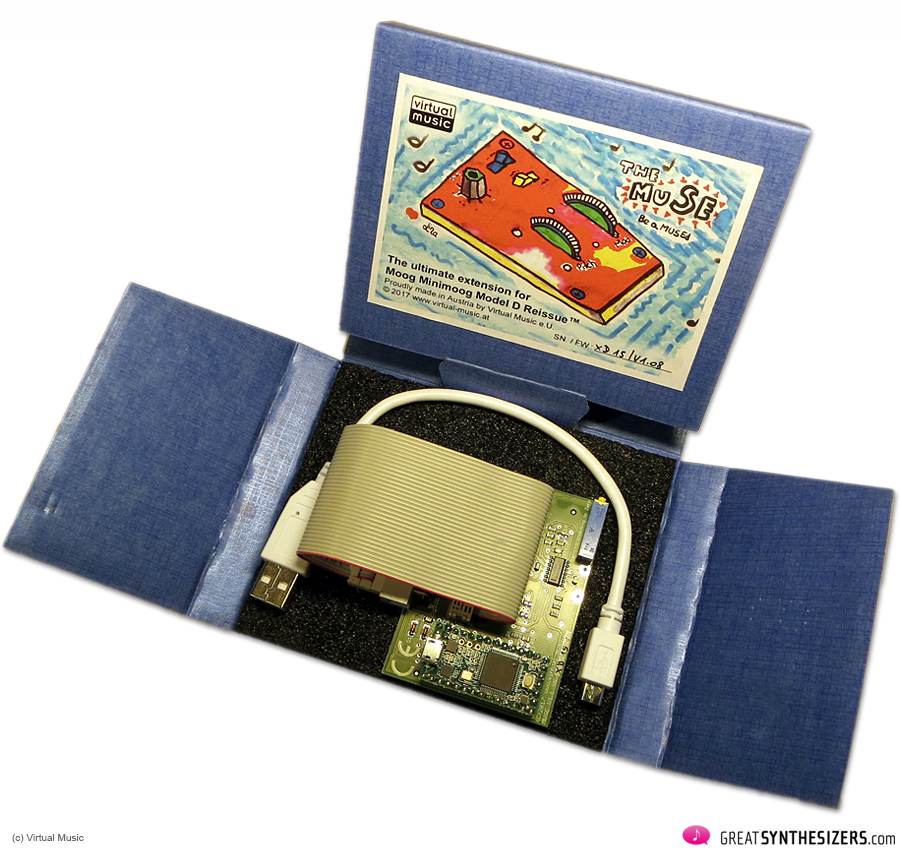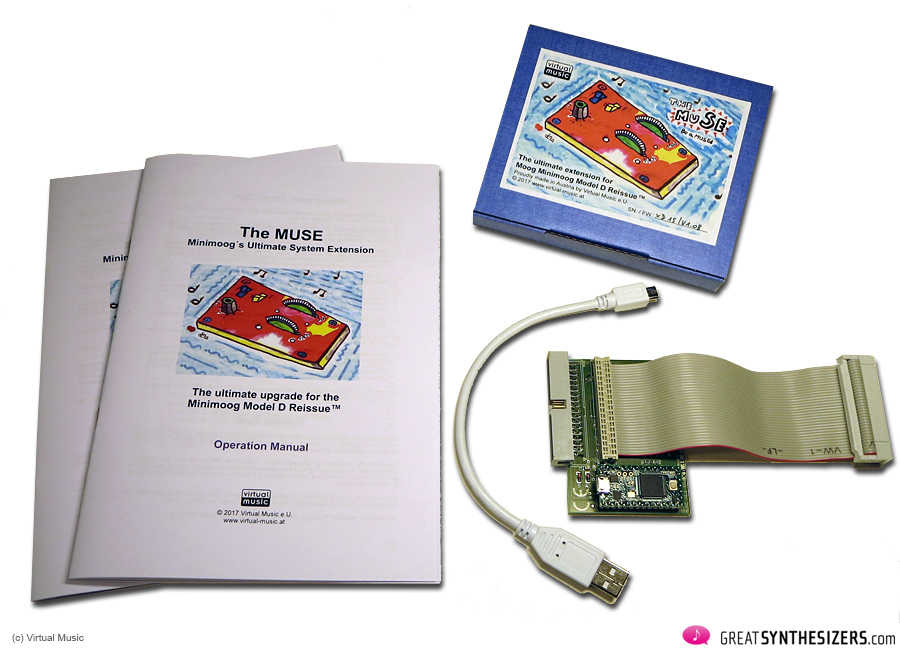Alexander Guelfenburg of Virtual Music (Vienna) has surprised the Minimoog community with “The MUSE” – a small but comprehensive elaboration of the Minimoog reissue. We’re talking about an internal interface for the new Minimoog Model D which eliminates possible “teething troubles” and also offers new MIDI functions.
What’s it for?
Any Minimoog user knows that, due to its mechanics, the center of the pitch wheel is always a bit “shaky”, resulting in a gradual detuning of the instrument. With “The MUSE”, the pitch wheel has an exactly defined zero point. Furthermore, the bending adjustment can now be precisely set from 0 to 12 semitones.
The second important feature of “The MUSE” is the modulation wheel’s connection to MIDI, so that the Minimoog reissue is now MIDI-compatible in all of its main performance aspects.
Features of “The MUSE”
- The pitch wheel has a defined zero point – your Minimoog reissue is always perfectly in tune
- Intervals can be precisely bent via pitchbend
- The modulation wheel responds to MIDI
- Modulation-wheel sweep can be reduced by 75% – enabling more subtle adjustments
- Modulation can be controlled via after-touch (both internally and via MIDI). Very useable for expressive soli …
- Auto-glide function enhances glide mode
- Both the glide and decay switches are now capable of full MIDI response
- Incoming MIDI pitchbend events are filtered and smoothed
- Pitchbend is disengaged from the synth engine during Local Off
- Additional interface updates possible (USB)
- Interface programmable either via MIDI SysEx or via keyboard
The implemented “Keyboard Edit Mode” is convenient to use. Press the highest and lowest key simultaneously for 5 seconds, after which a modulated tone signals activation of alternative keyboard functionality. Each key is now assigned to a specific function, allowing for quick selecion of interface features.
Installation
“The MUSE” is designed for self-installation. No soldering or drilling required – any skillful musician can easily install the interface into the opened Minimoog. “The MUSE” can also be installed by any competent synth service engineer, of course. All steps are described in detail in the installation manual (German / English) along with extensive illustrations. The interface board is mounted inside the Minimoog (a little hot glue, and that’s it). No additional holes, switches or other modifications, so – the Minimoog Model D reissue retains its original condition and collector’s value even after “The MUSE” has been installed.
Operation
“The MUSE” comes with a separate operation manual (again, in German or English), explaining the interface concept and all of its functions in detail. Fortunately, the logical structure of “The MUSE” guarantees quick and easy operation. Once installed, you will hardly notice the presence of the interface, except, of course, for all of those new features.
What You Get
The interface comes in a cute box with two manuals plus a USB-cable for possible future firmware upgrades.
Support
Since Virtual Music is a global partner in terms of synthesizer services, customer support is top priority. If you have any questions, Virtual Music will quickly help. In addition, the partnership-based customer relationship also proves conducive to the development of new features.
To Sum It Up
“The MUSE” is an important addition to the Minimoog Model D reissue. It alleviates technical imprecision and ads features that make the legendary Moog synthesizer even more unique. Once installed, you’ll probably never want to perform the new Minimoog without “The MUSE”.
x
Website Manufacturer:
www.virtual-music.at/en/moog





